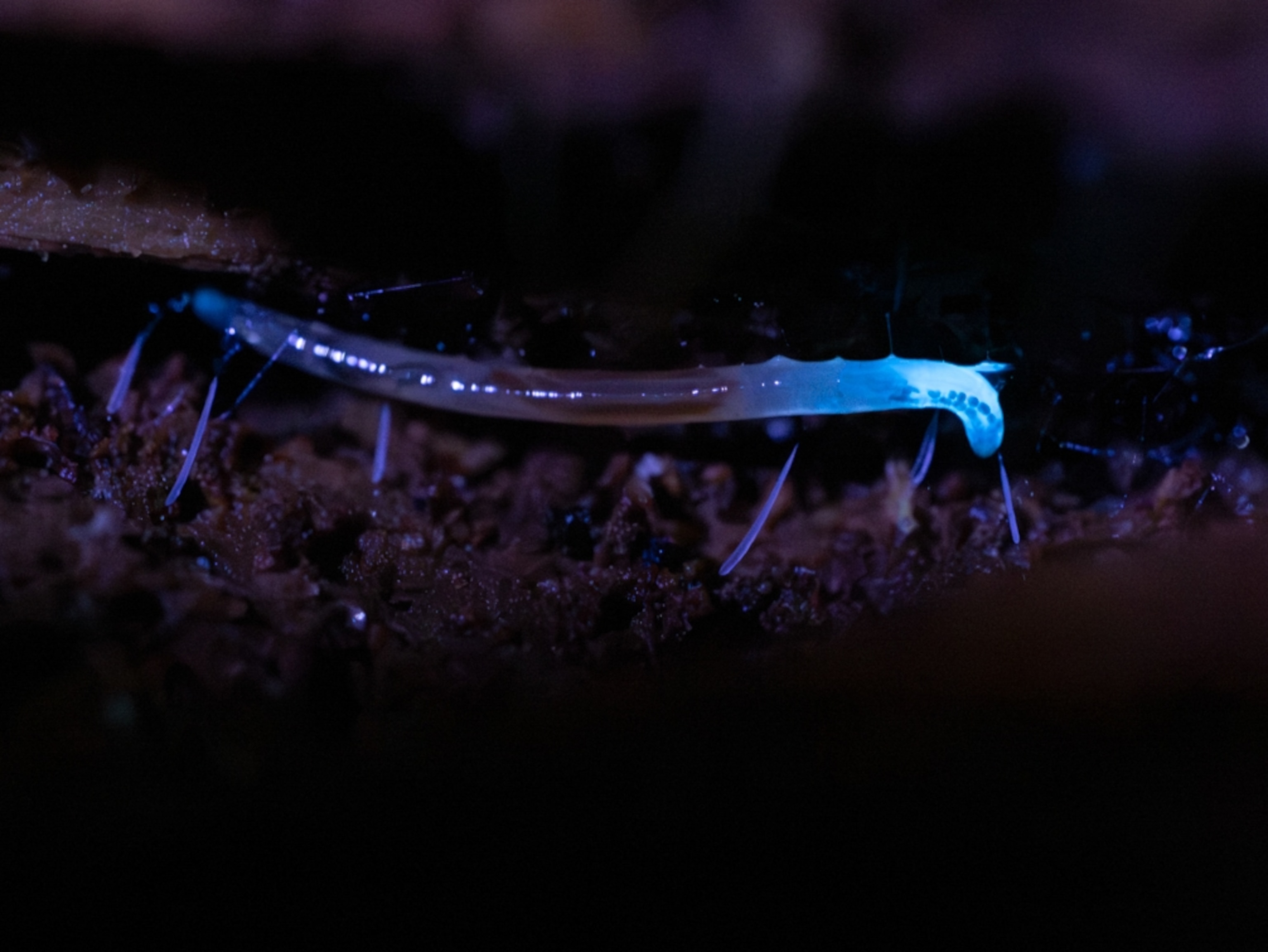See Amazing Ocean Creatures That ‘Glow’
From coral to sea turtles, marine biologist David Gruber has found several biofluorescent marine species.
Over the past decade, scientists have discovered the seemingly dark deep sea is actually ablaze with color.
From corals to sea turtles to eels, countless marine species are biofluorescent, or have the ability to reflect the blue light hitting a surface and re-emit it as a different color. (See “Rainbow of Fluorescent Corals Found—Why Do They Glow?”)
“Biofluorescence in the marine environment is like this constantly unfolding mystery novel,” says David Gruber, a marine biologist and National Geographic Explorer at Harvard University. “One thing keeps leading to another thing, and it’s one of these things that we’ve become a little obsessed with.”
Biofluorescence is not to be confused with bioluminescence, in which animals produce their own light via a chemical reaction. If bioluminescence is the equivalent of glow sticks that you crack open on the Fourth of July, biofluorescence is more akin to fluorescent paint glowing under a blacklight, Gruber says.
Biofluorescence is a relatively new field of study, but it has been booming in recent years. Here are some highlights of Gruber’s recent glowing discoveries. (See pictures of other animals that glow.)
Shining Sharks and Fluorescent Fish
Researchers have found evidence for biofluorescence in more than 200 species of fish, like red-glowing gobies. Gruber and his colleagues have also discovered that at least two species of catshark glow as well.
“It started in corals,” Gruber says. “All the sudden, we found it in a fish and that started to make the mystery novel evolve even further.”
Humans see light in shades of red, green, and blue, but our vision falters underwater. Below the surface, objects appear dark and blue, so it’s hard to pick out fluorescent organisms without special equipment.
In 2016, Gruber and his colleagues developed a "shark-eye camera" to see the world from the perspective of two species of biofluorescent sharks—the chain catshark and the swell shark. They found that these species can absorb blue light and reemit it as green. (Read about a species of seabird with a glowing beak.)
"Imagine being at a disco party with only blue lighting, so everything looks blue," Gruber told National Geographic at the time of the discovery. "Suddenly, someone jumps onto the dance floor with an outfit covered in patterned fluorescent paint that converts blue light into green. They would stand out like a sore thumb. That's what these sharks are doing."
Radiant Turtles
While in the Solomon Islands studying biofluorescence in sharks and corals on another expedition in 2015, Gruber accidentally spotted another glowing specimen: A hawksbill sea turtle.
“I was filming coral and then it came in front of my lens and then hung out with us for three minutes,” Gruber said at the time.
Oddly, the turtle in the footage appeared to glow in two colors: green and red. Gruber later examined young hawksbills in captivity, and found that all of them glowed red. (Related: “Like The ‘Glowing’ Sea Turtle, These Animals Also Light Up.”)
It’s unknown why the sea turtles glow red, but he suspects it have something to do with attracting mates or finding other turtles. Gruber says the research could be used to help with conservation.
“If we understand the animal more, we can help design fishing gear that the animal won’t get caught in,” Gruber says. “[Sea turtle species are] in this endangered state and [bioflourescence is] a feature of them we hadn’t known about until just a few years ago.”
Smoldering Eels
Gruber has also observed biofluorescence in eels by accident. When he was photographing biofluorescent corals off Little Cayman Island in the Caribbean in 2015, a bright green glowing eel photobombed him.
“This is one of the most mysterious and shy eels that we could find,” Gruber says, adding that this footage was the first time these eels had been photographed in the wild. “Imagine these small little eels that are normally hidden under a rock. The full moon would illuminate their fluorescence and they would see each other.”
It’s possible that, like sea turtles, eels could give off light for mating purposes.
Gruber says eels fluoresce when one molecule, called bilirubin, interacts with another molecule. Studying this chemical reaction in eels could help scientists develop diagnostic tools for bilirubin-related conditions in humans. For example, when newborn babies have too much of this molecule in their blood, they develop the liver condition jaundice.
"As well as this being something [for eels]," he says, "it's also something that could be used to help humans."
This article originally published on June 11, 2018. It has been updated with more information from the researcher.













